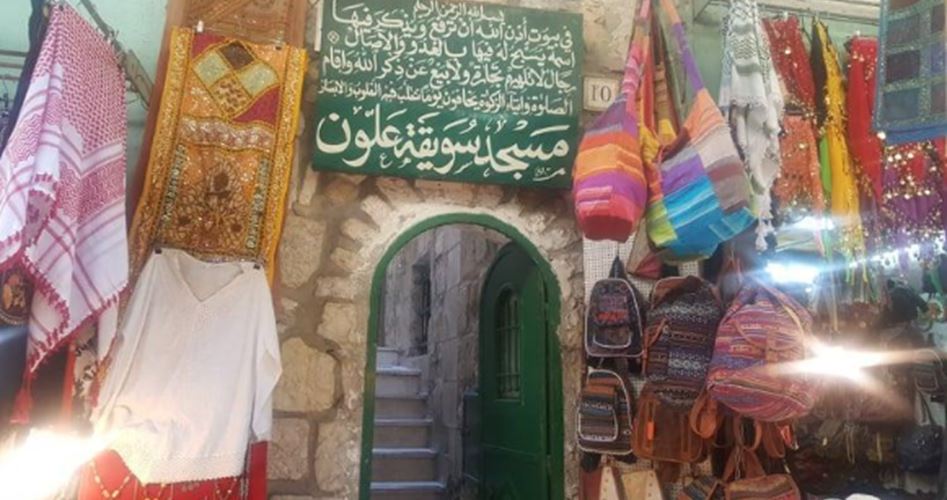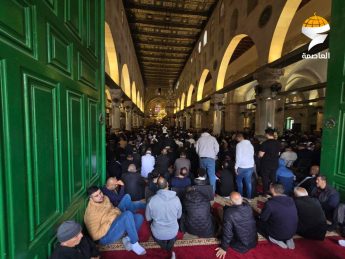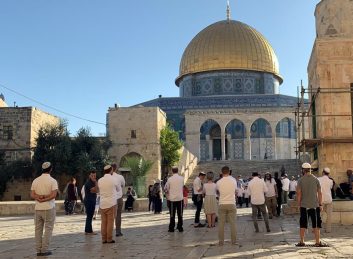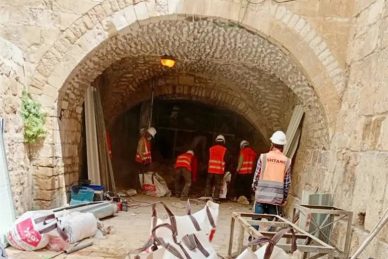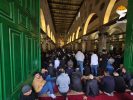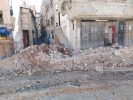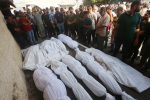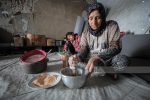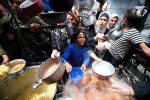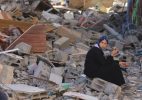Suwaiqat Aloun is one of the markets inside the walls of the Old City of Jerusalem which stands in defiance of Judaization and the plans of the Israeli occupation speaking of the Arabism of the occupied city.
The Suwaiqat Aloun market is located in the Christian Quarter near Bab al-Khalil where a road leads to the Church of the Holy Sepulcher Al-Aqsa Mosque and the Buraq Wall.
This market is characterized by the sale of antiques and replicas of ancient monuments that affirm the Arabism of the holy city. It is usually frequented by foreign tourists.
Suwaiqat Aloun extends from the parking lot at Bab al-Khalil to the junction of the bazaar and the Christian Quarter.
Name
The name of the market is after the name of the mosque in which it is located which dates back to the Ottoman period and was named after the family of Aloun from Jerusalem. It was formerly known as the Hamzah ibn Abd al-Muttalib mosque. It is located on the right side of the gate to Al-Aqsa Mosque 75 meters away from it to be exact.
The documents of the Supreme Islamic Council reveal that renovation was carried out in the mosque in 1945 including the replacement of its door with a new wooden one and the appointment of an imam named Sheikh Kamel Mubarak.
Three years later it was supplied with electricity as an inspection of it has revealed it needs to be connected to electricity.
There are two successive entrances to the mosque. One could ascend to the first entrance through two external steps leading to another seven steps from inside and then to a vestibule of not more than a meter wide and three meters long while the second entrance leads to the prayer place. There is a muddy water tank to store water and most architecture is made of arches ending with a half-barrel base. Its surface is flat topped by a tower with a loudspeaker.
The mosque has a hollow prayer place decorated with small colored tiles. The tiles were recently renovated and the floor and walls are up to a meter high. The mosque has a small modest library and the five Muslim prayers are held there on daily basis.
History
One of the merchants of Suwaiqat Aloun recalls how the Jordanian army in the Bab al-Khalil fortress was passing through the place and how citizens living in the Armenian Monastery used to come to the Suwaiqa to buy their needs.
He added to the PIC reporter that the Suwaiqa was a stop for merchants; they would get their goods at Bab al-Khalil explaining that the majority of merchants in the past were Armenians working in gold. Other shops included a library a watch repair shop a vegetables shop and a currency exchange shop belonging to the Kabariti family that presently lives in Jordan.
With the existence of holy sites such as Al-Aqsa Mosque and the Church of the Holy Sepulcher the need for having markets to meet the needs of the local inhabitants as well as pilgrims at religious sites and tourists became critical. Therefore the market shifted to the sale of antiques.

